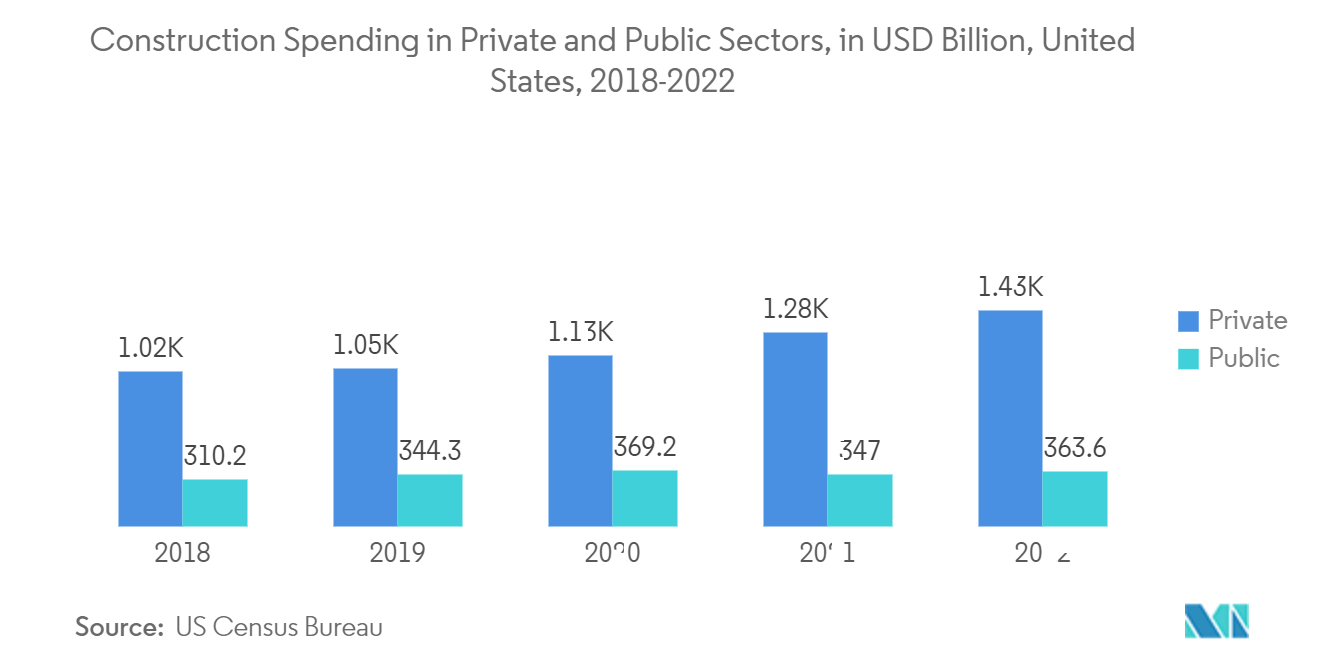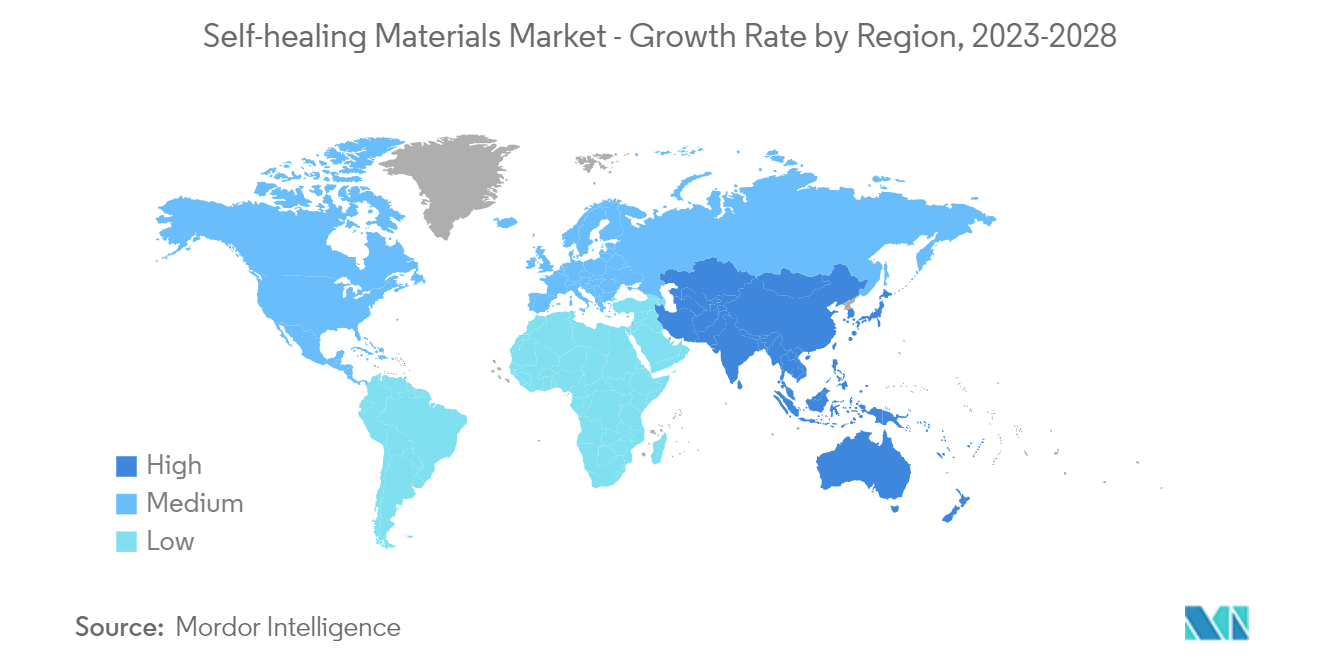Market Trends of Self-healing Materials Industry
Construction Inudstry to Dominate the Market
- Self-healing materials play an essential role in the construction industry. These materials include the potential to rapidly fix the cracks as the self-healing process allows speedy treatment. It is used in concrete to strengthen and extend the life of buildings, bridges, and other structures.
- The ever-increasing global construction industry will likely increase the demand for self-healing materials.
- According to the US Census Bureau, the seasonally adjusted annual rate of privately owned housing units approved by building permits in January 2023 was 1,339,000, 0.1 percentage point higher than the revised December estimate of 1,337,000.
- The same statistical report by US Census Bureau also stated that privately owned housing completions were at a seasonally adjusted annual rate of 1,406,000 in January 2023, up 1.0% from the revised December estimate of 1,392,000 and 12.8% from the January 2022 pace of 1,247,000.
- Aside from new home development, the United States is investing heavily in home improvements. The necessity for rehabilitation became increasingly critical as the country's migrant population grew. In addition, the increased awareness of the importance of sustainability and high-efficiency constructions also fueled the restoration trend.
- Germany also approved the construction of 25,399 dwellings for October 2022. According to the Federal Statistics Office (Destatis), this reflects a 14.2% decrease in building permits from October 2021. Also, 297,453 residential building licenses were issued between January and October 2022.
- All these construction activities in various locations worldwide increase the demand for self-healing materials in the industry, propelling the market ahead.

Asia-Pacific to Witness the Highest Growth Rate
- In recent years, Asia-Pacific saw a considerable increase in demand for self-healing materials, particularly from China and India. The Asia-Pacific region's consumption of self-healing materials is predicted to skyrocket due to the materials' increasing lifespan, durability, safety, efficiency, and performance.
- China's building industry is expanding at a rapid pace. According to the National Bureau of Statistics of China, construction output in China was valued at around CNY 276 billion (USD 40 billion) in the fourth quarter of 2022, representing a 50% increase over the previous quarter.
- Over the next seven years, India is anticipated to see an investment of roughly USD 1.3 trillion in housing, with 60 million new dwellings being constructed. India also plans to surpass its goal of becoming the world's third-largest building market by 2025. Regarding the construction industry, the government allocated INR 60,000 crores (USD 7.72 billion) for the Ministry of Road Transport and Highways in the Union Budget 2022-23.
- According to Japan's Ministry of Land, Infrastructure, Transport, and Tourism (MLIT), overall investment in the construction sector in 2022 is expected to be around JPY 66,990 billion (USD 508.16 billion), a 0.6% increase over the previous year.
- Moreover, the Japan Electronics and Information Technology Industries Association (JEITA) estimated the overall production value of the electronics sector in Japan to be around JPY 10.1 trillion (84.5 USD billion) as of November 2022, roughly 100.7% of the value from the previous year. When compared to the prior year, the exports of electronics from Japan also increased by almost 15% up until November as compared to the previous year.
- Thus, the growing construction activities, the increasing automobile industry, and the rising electronics sector are instrumental in the growth of self-healing materials and other applications, which would boost the market during the forecast period.



